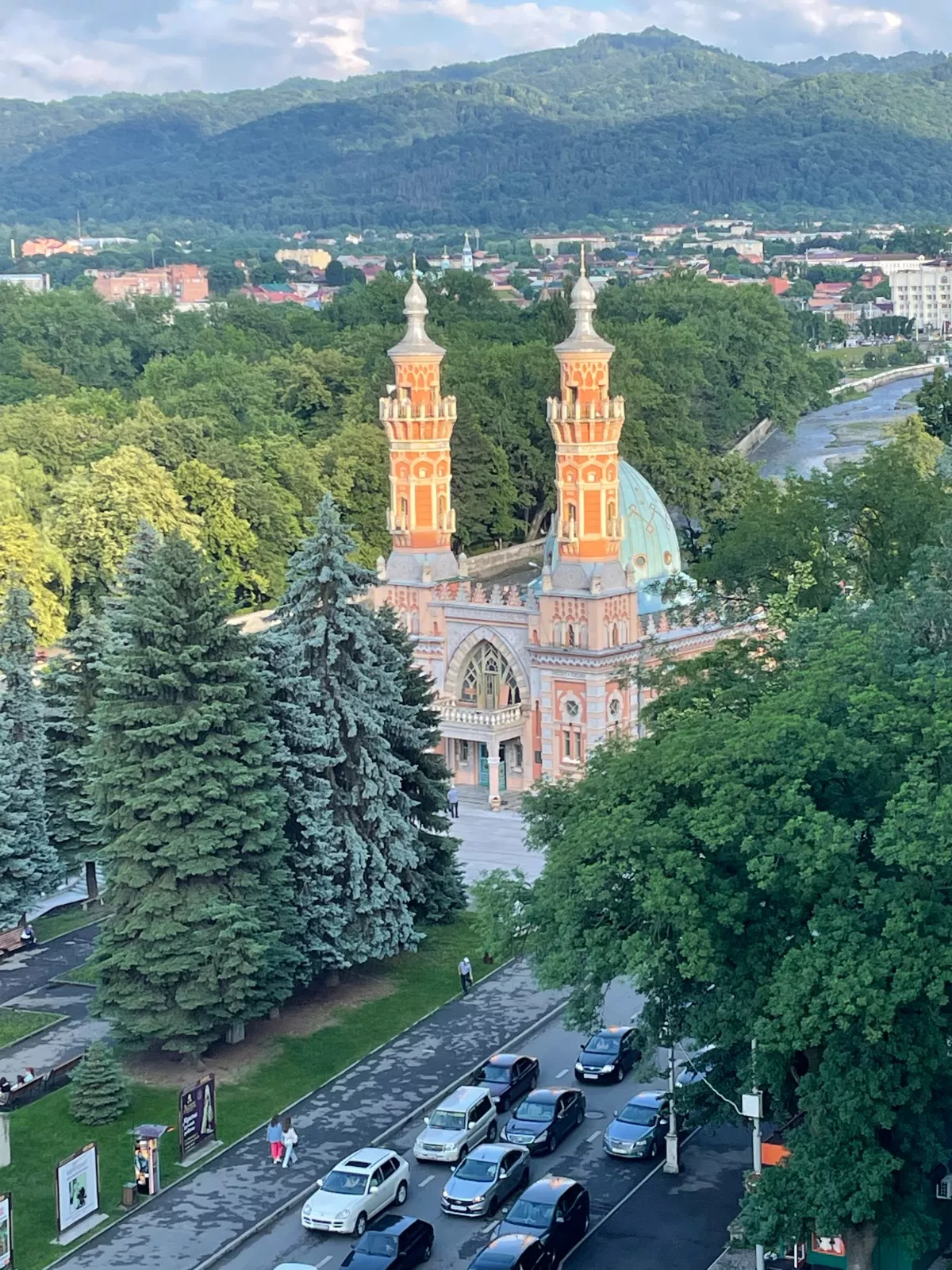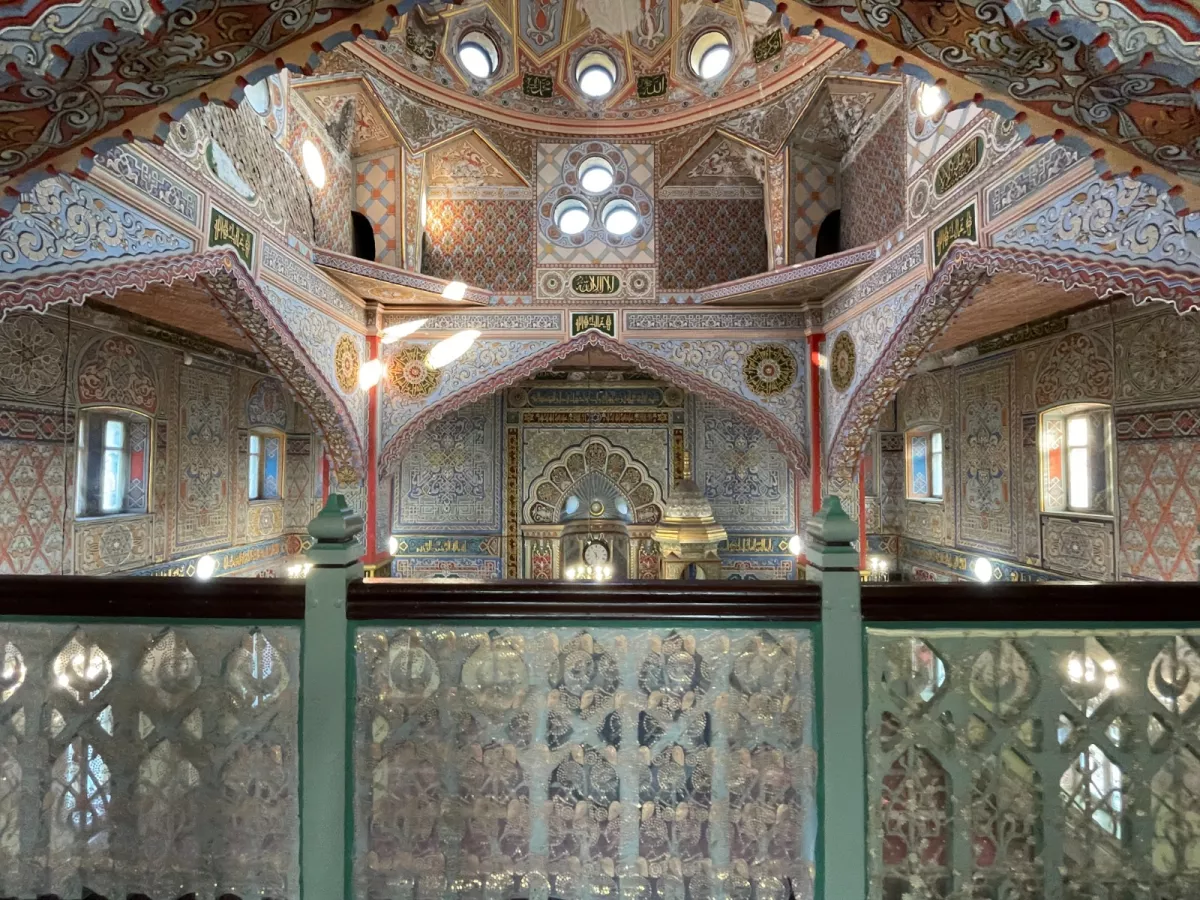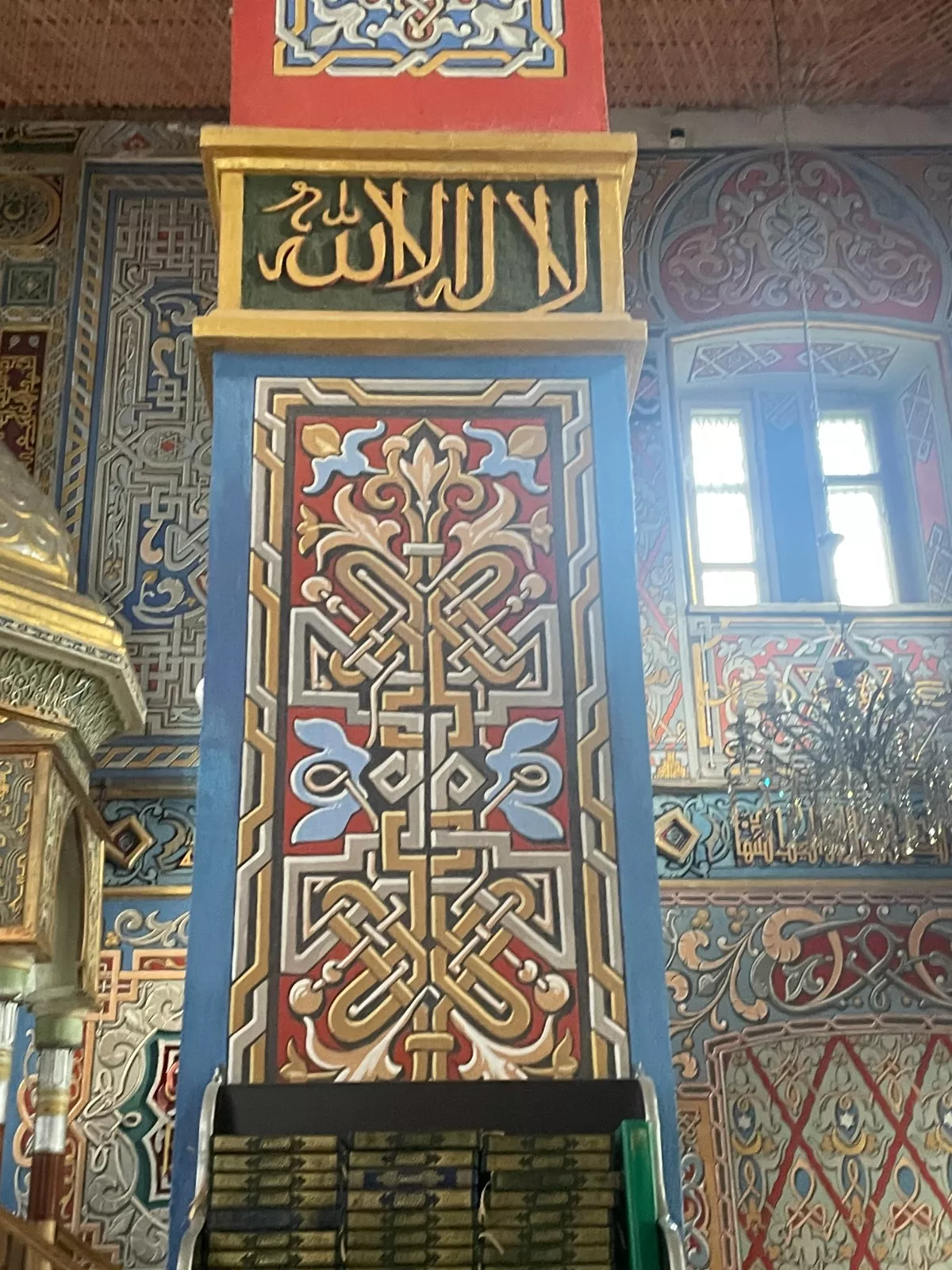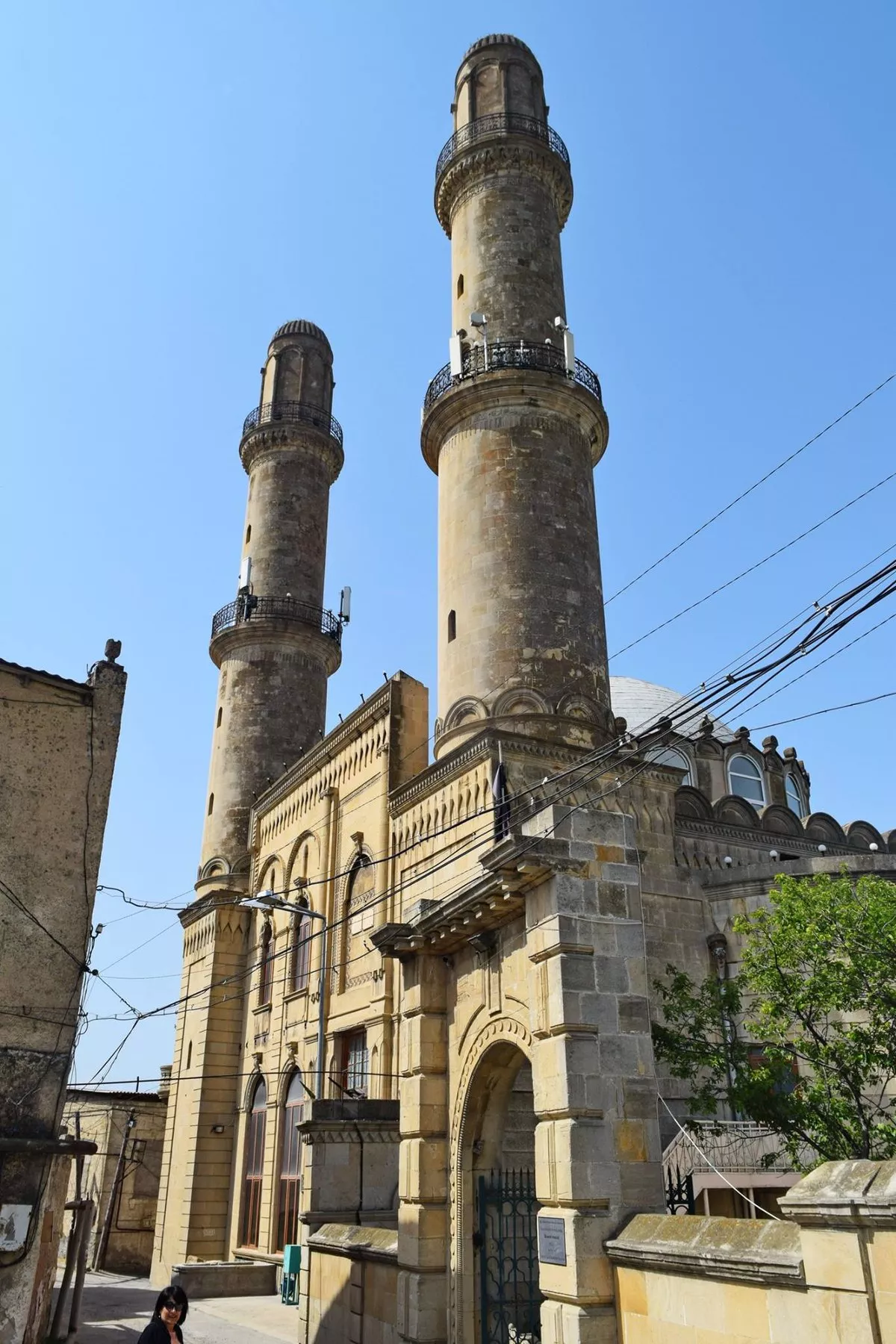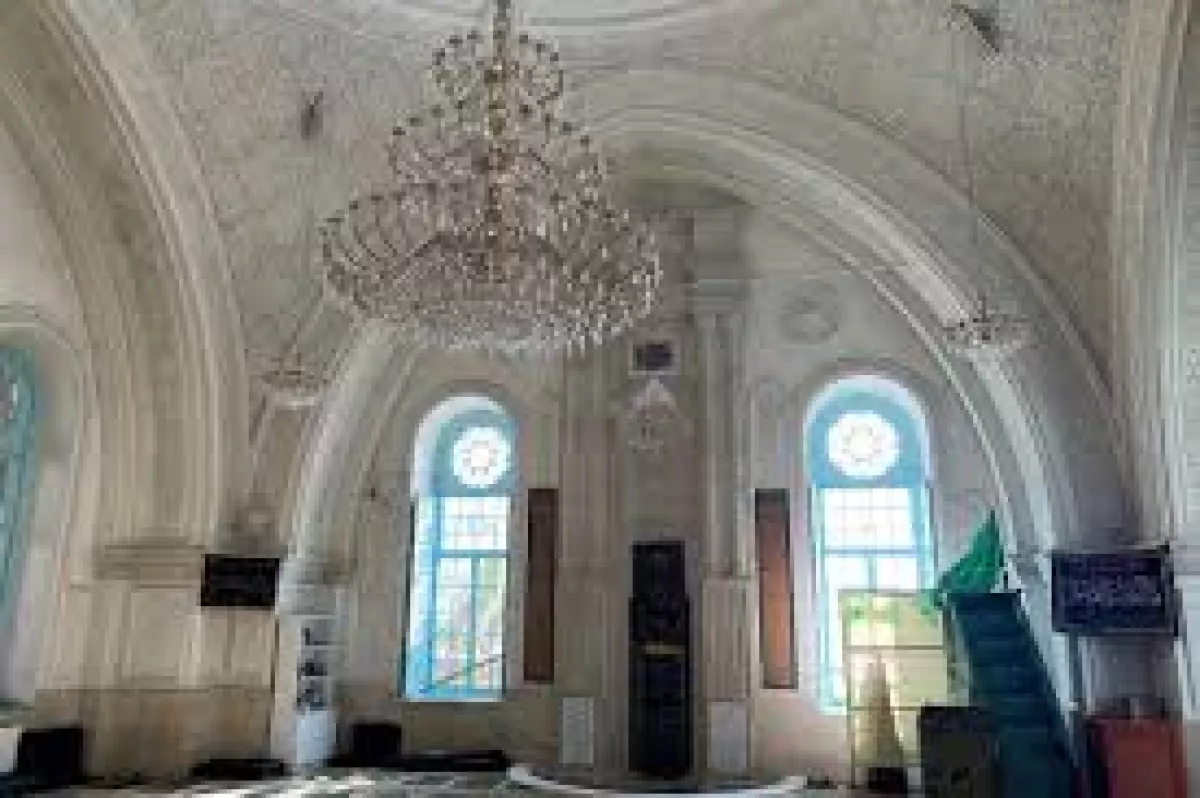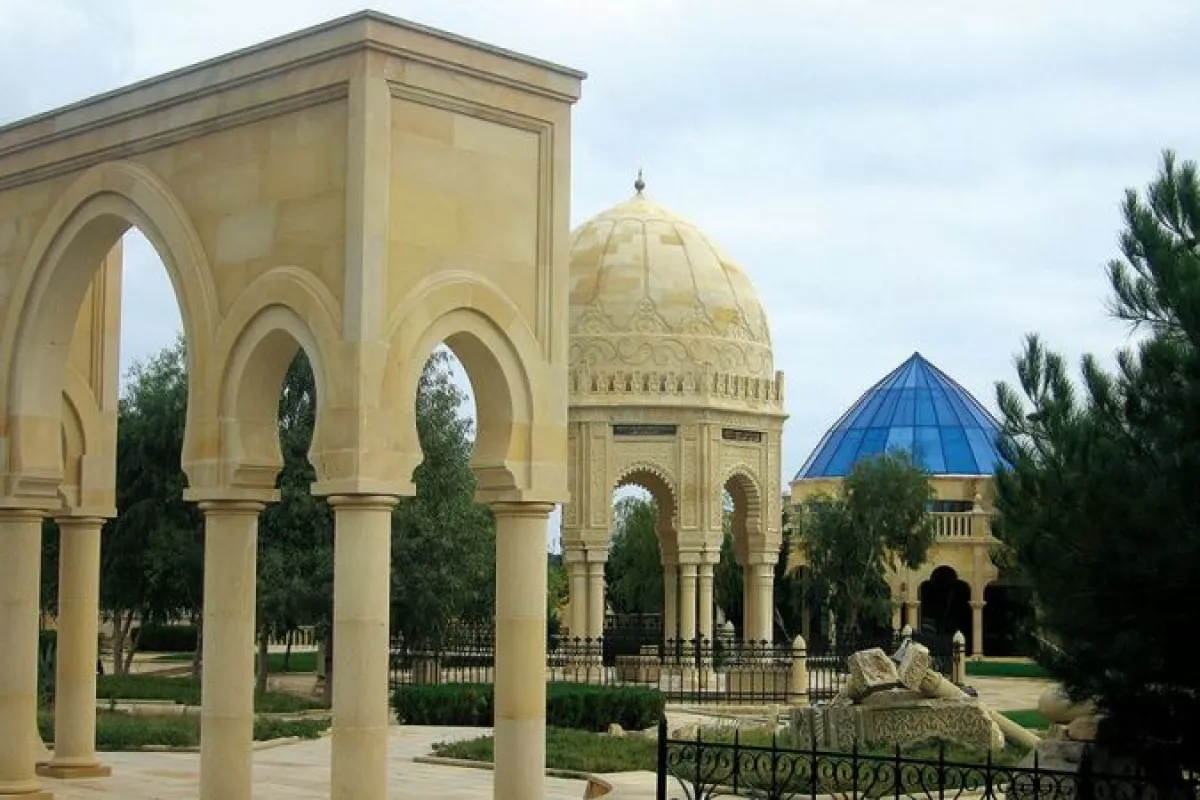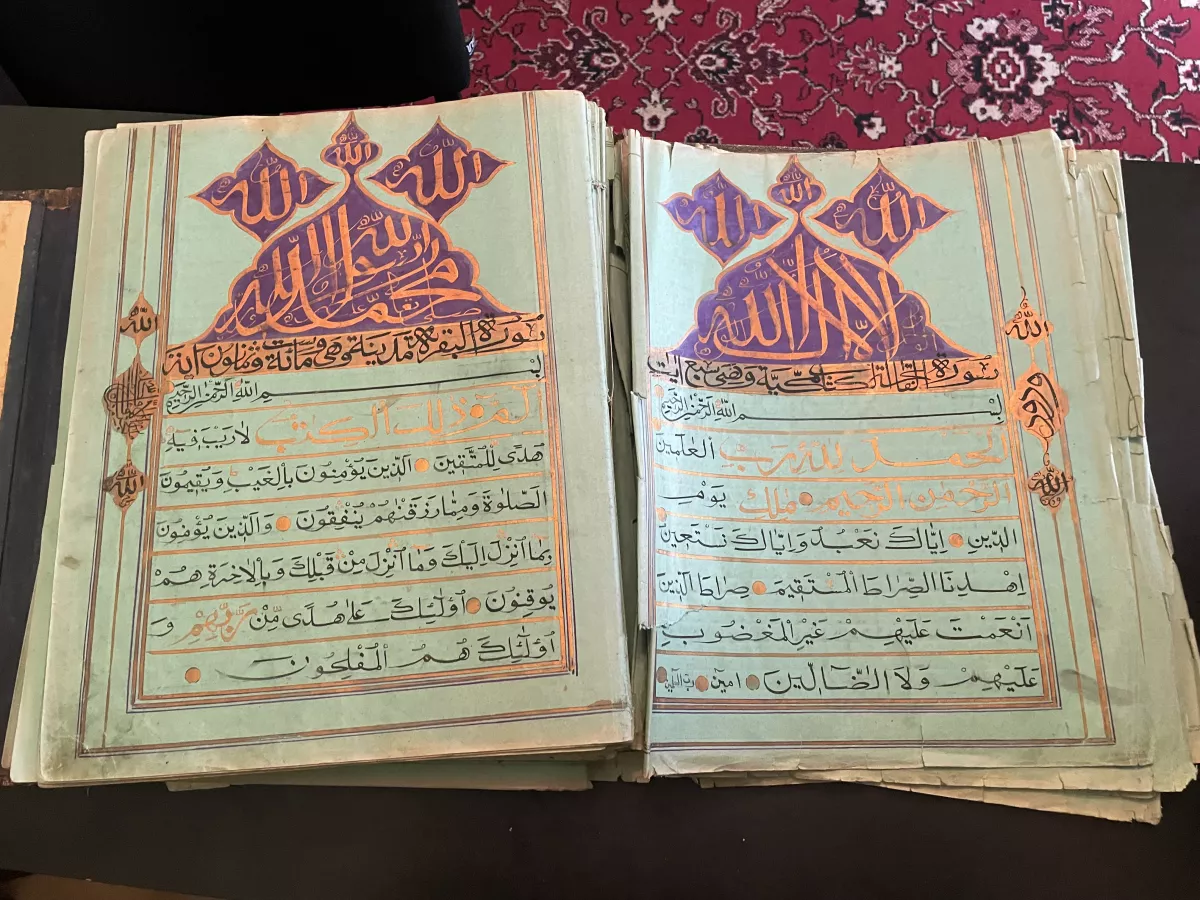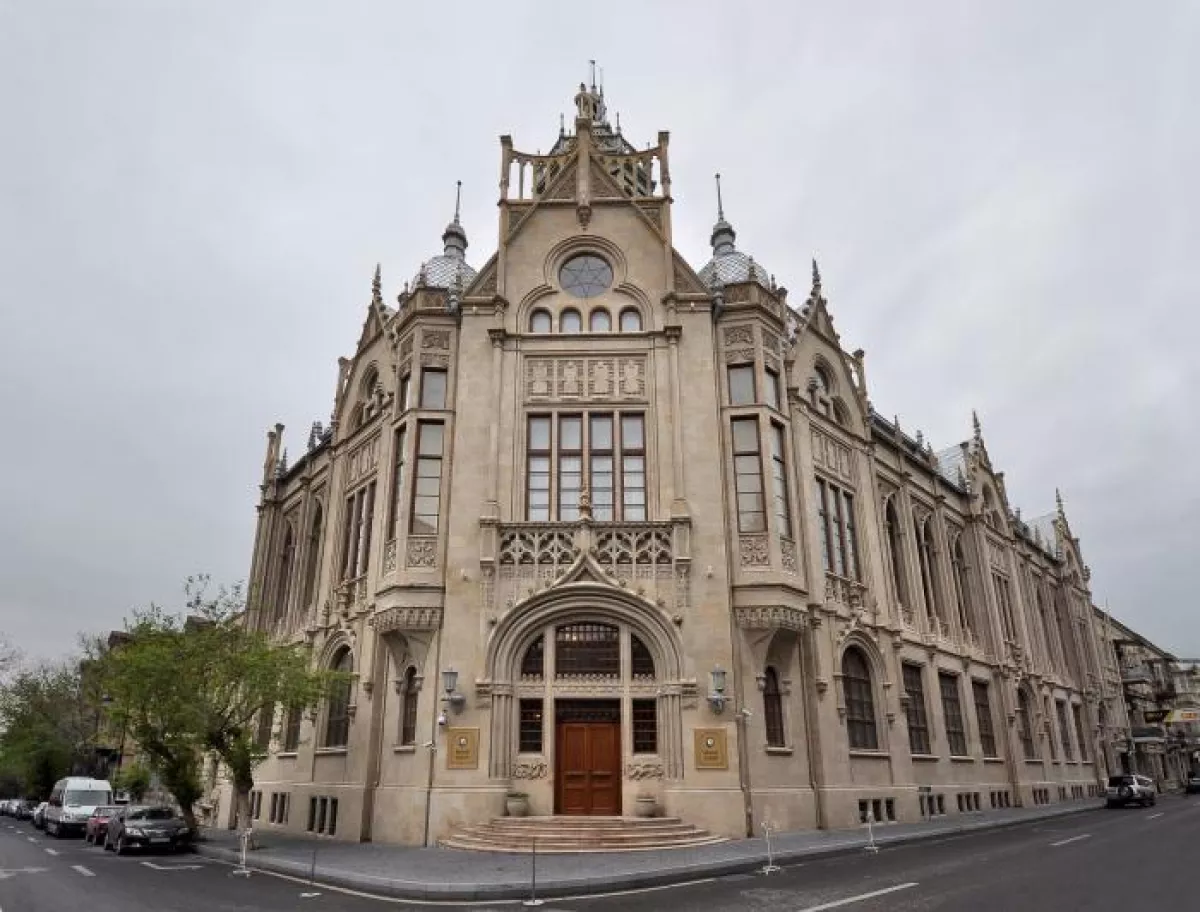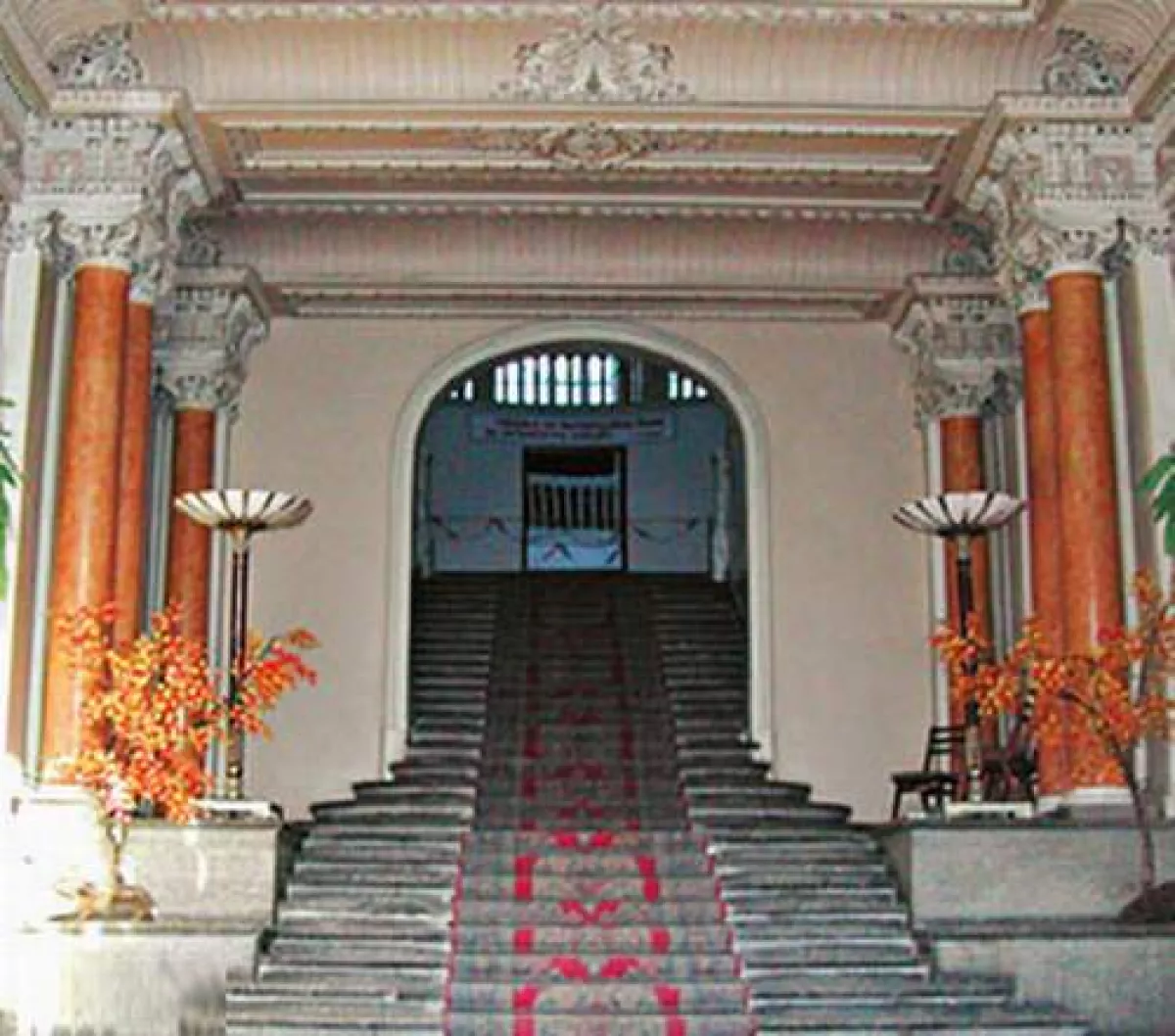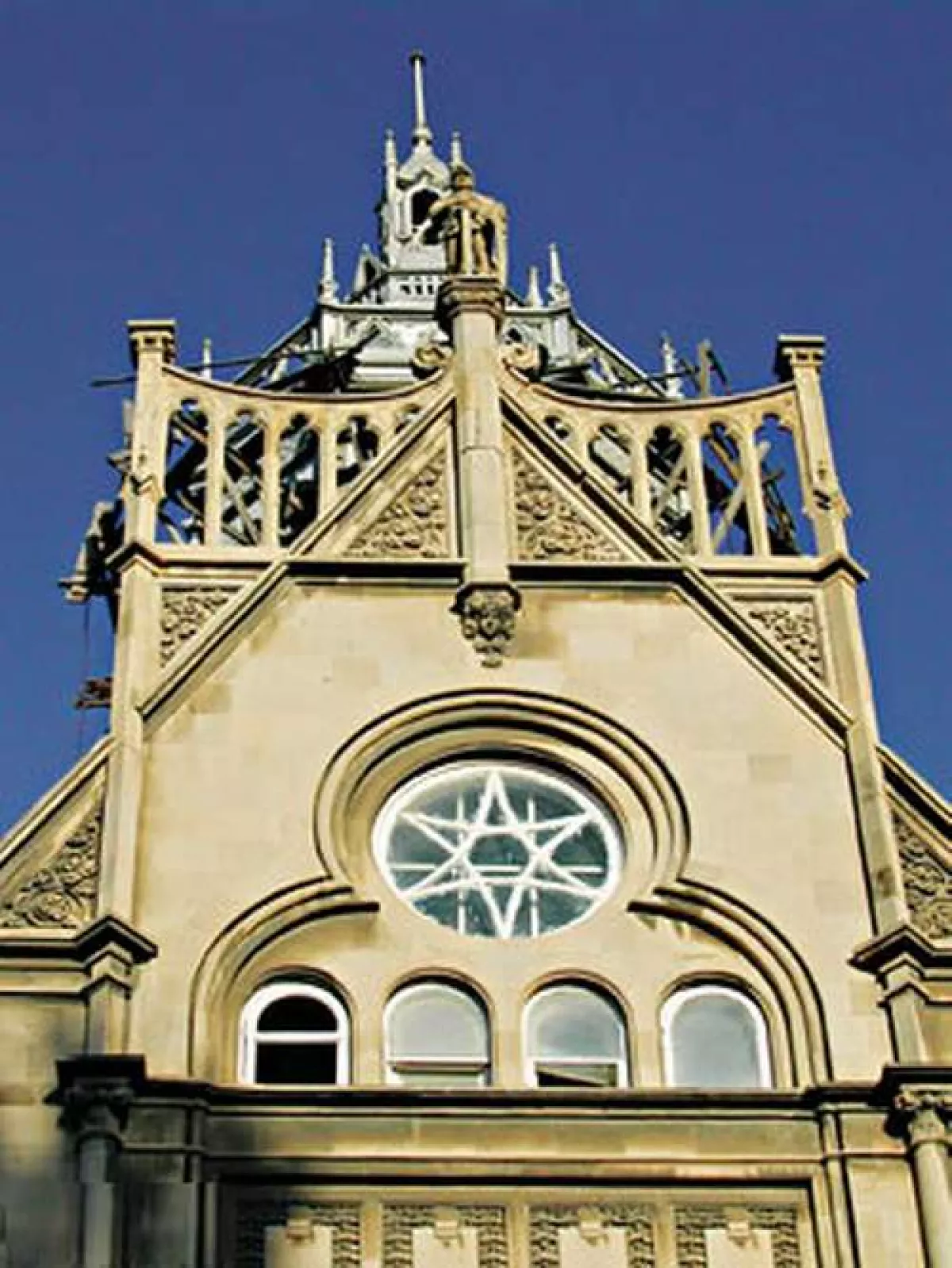Architectural legacy of early 20th-century Baku oil magnate Murtuza Mukhtarov Part I / PHOTO
The history of Azerbaijani oil dates back to ancient times. However, a new era in its extraction began in 1848 when the first oil well in the world was drilled in the village of Bibi-Heybat. This period, which lasted until the 1920s, not only contributed to economic prosperity but also left a vivid mark on the architecture of Baku and other cities. Magnificent mansions and public buildings, built with the funds of Azerbaijani oil magnates, became symbols of wealth and progress. Among them, notable structures were constructed with the funds of Naghiyev, Taghiyev, Asadullayev, Isa Bay Hajinski, and many other philanthropists.
A special role was played by Murtuza Mukhtarov — a man who reached incredible heights through his hard work and talent. Born in the village of Amirjan, he started from the bottom. However, thanks to his determination and persistence, he soon became an expert in drilling, and then acquired mechanical workshops, turning them into a successful enterprise. Over time, Mukhtarov founded his own company, which specialized in the production of drilling equipment. A turning point in his career came with the discovery of rich oil reserves on his land, which made him one of the most influential oil magnates of his time.
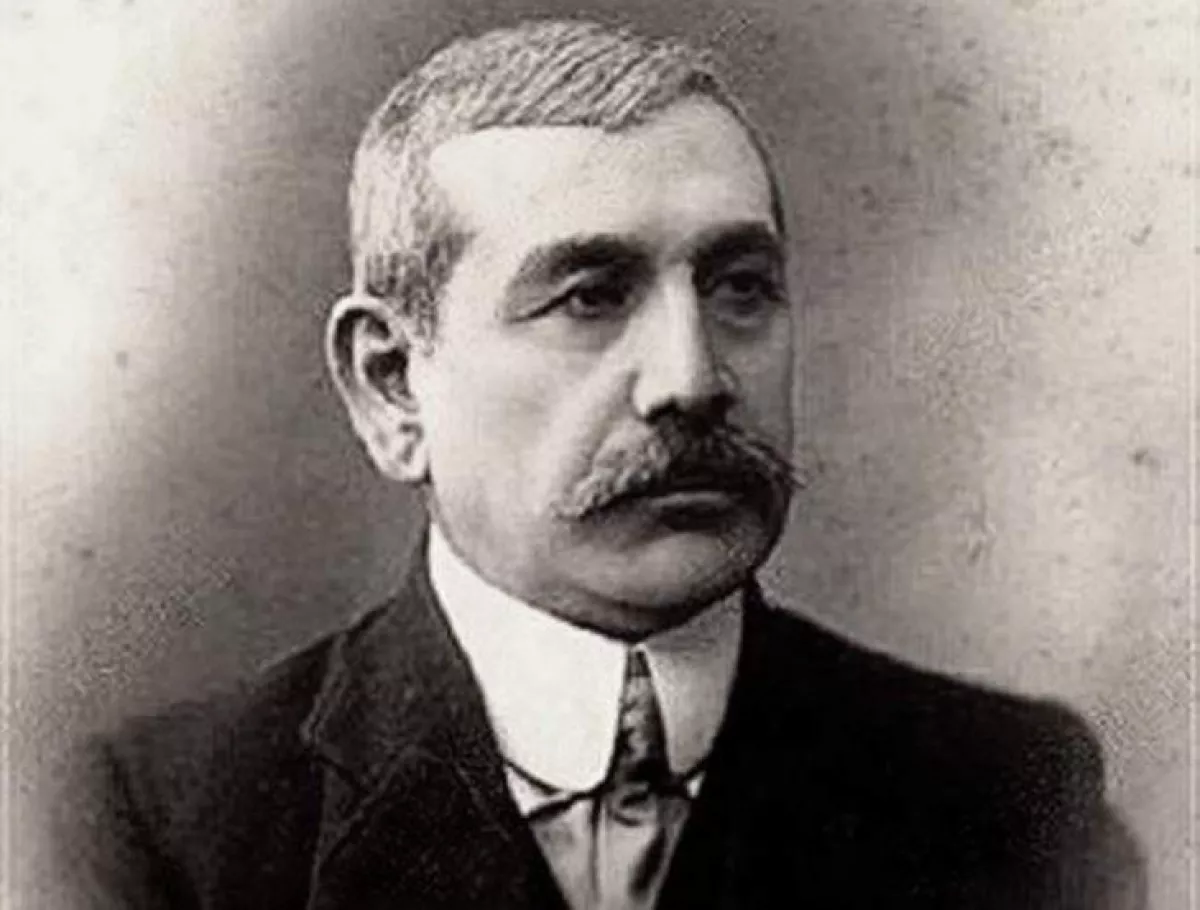
Mukhtarov, despite not having a higher education, entered the history of the Azerbaijani oil industry as an outstanding innovator whose knowledge in drilling and field development was on par with professional engineers.
In 1895, Mukhtarov patented a modernized impact rod drilling machine, called the "Baku drilling system," which surpassed existing analogs and became globally known as the "Mukhtarov." His equipment was exported to various countries, and he developed many other inventions. It is important to note that at the end of the 19th century, Mukhtarov founded the first drilling equipment manufacturing plant in Russia, located in Bibi-Heybat. He was a shareholder of the Moscow-Volga Oil Company. Interestingly, in his memory, one of the stops on the Baku-Buzovna railway is named "Mukhtarovka" — the location of his oil fields.
Murtuza Mukhtarov is also known for his charitable initiatives and construction projects. He patronized the Muslim Women's Charitable Society and donated a 2.5-hectare plot of land in one of Baku's settlements, Gala. Historical documents, including a plan, attest to this donation. On this land, the philanthropist built two orphanages.
The mosque in Vladikavkaz
Murtuza Mukhtarov left behind not only a significant mark in the oil industry but also numerous remarkable architectural structures. One of his most significant projects was the Vladikavkaz Mosque, the history of which began with the desire of local Muslims to build a cathedral mosque. However, the lack of funds for a long time prevented the realization of this idea. In 1894, the newspaper Terskie Vedomosti published a notice stating that the Muslims of Vladikavkaz petitioned the authorities for permission to collect donations from fellow believers for the construction of the mosque. The location for the mosque was carefully chosen, and after all the approvals and agreements, it was decided to build it on an empty plot on the bank of the Terek River. Despite this, the necessary funds were still insufficient. The Muslim community of Vladikavkaz then turned to a frequent guest of their city, the Baku oil magnate Murtuza Mukhtarov, who responded to their request.
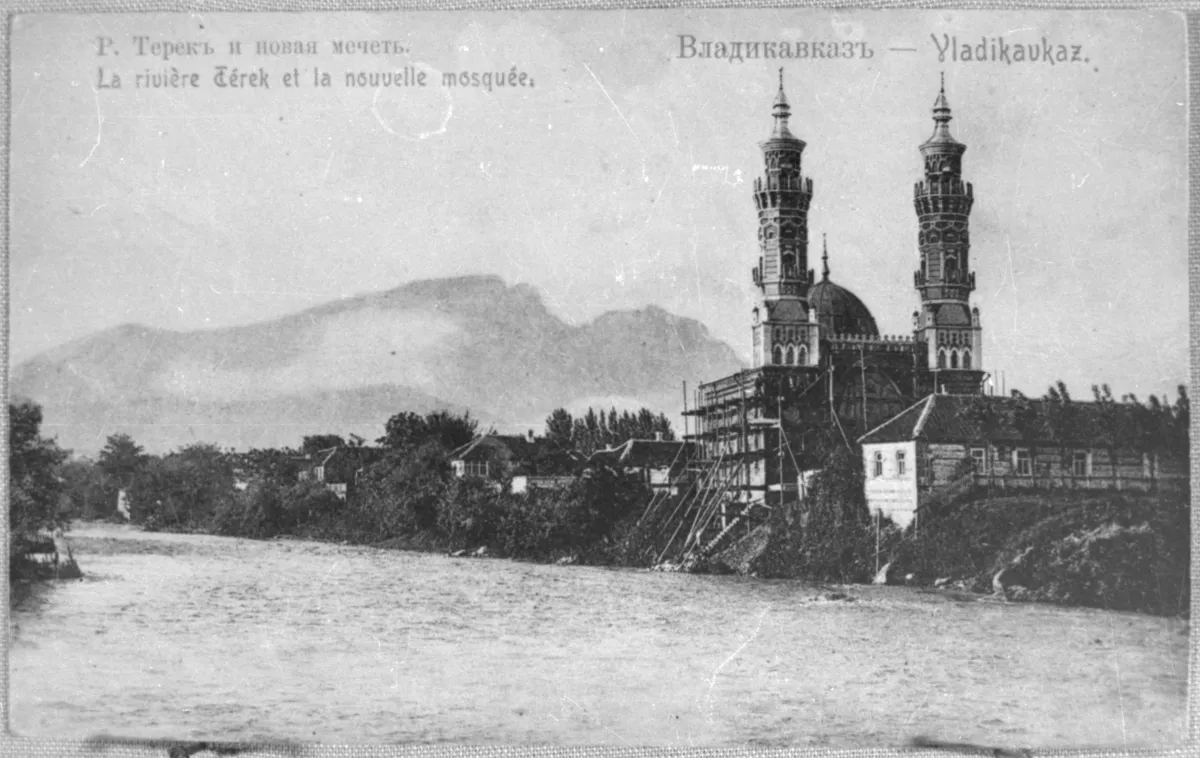
In 1908, with funds provided by Mukhtarov and the design of the famous Baku architect Józef Płoszko, a magnificent and unique mosque was built on the bank of the Terek River, becoming an architectural gem of the city. The newspaper Priazovsky Krai reported that the construction cost 80,000 rubles, over 50,000 of which were contributed by Mukhtarov himself. The grand opening and consecration of the mosque took place on October 14, 1908. As a token of gratitude, the Muslim community of Vladikavkaz decided to name it after its benefactor — the Jumah Mosque of Mukhtarov.
Despite its distance from the center, the thoughtful location of the Vladikavkaz Mosque on the high bank of the Terek made it an important silhouette landmark of the city, especially at a time when the surrounding buildings were predominantly single-story. The height of the minarets reaches 33 meters, the domes are 16 meters tall, and its capacity allows for 600-650 people to pray. Closed in 1933, the mosque was spared from destruction thanks to Officer Betkenev, who ordered his soldiers to protect the building. Later, it housed a cultural center, a workers' club, and an anti-religious museum. From 1948 to 1964, the mosque hosted the natural history department of the local history museum. In 1994, it was returned to the believers and once again became one of the largest mosques in the North Caucasus.
The interior of the Vladikavkaz Mosque impresses with its magnificence: the walls and vaults are adorned with exquisite ornaments executed in the traditions of Islamic art, and the delicate paintings create a sense of airy lightness and solemnity. The color palette harmoniously blends rich shades of blue, green, and gold, highlighting the eastern elegance of the decor. The dome is decorated with graceful calligraphic inscriptions, while the arches and columns are covered with intricate patterns, creating an effect of depth and volume. These paintings make the mosque one of the most beautiful and richly decorated interiors in Russia.
Today, the Mukhtarov Mosque is not only one of the main architectural landmarks of Vladikavkaz but also its true ornament, attracting both worshippers and art enthusiasts. The mosque stands out against the city panorama, emphasizing the cultural richness and historical heritage of the North Caucasus.
The mosque in Amirjan
Among the numerous architectural masterpieces built with Murtuza Mukhtarov's funds, the mosque in his native village of Amirjan holds a special place. This grand structure with two elegant minarets became not only a religious center but also a symbol of the philanthropist's care for his homeland.
The construction of the mosque began in 1901, but was suspended due to a lack of funds. Upon learning of this, Mukhtarov took on all the expenses himself, and by 1908, the mosque was solemnly opened, with its first sermon delivered by the distinguished theologian and educator Akhund Abu Turab. The architect of the mosque was Zivar-bay Ahmadbayov. It was in this mosque that Murtuza Mukhtarov himself prayed.
The mosque has two minarets, each 47 meters high. The doors and windows are decorated with shabaka. The circle above the mihrab symbolizes Allah, the four vaults represent the prophets, the four columns symbolize the holy books, and the thin lines beneath them represent the twelve imams. On the right and left sides of the mosque, greetings to the prophets are written in Arabic. Mukhtarov gifted this mosque a Quran, which he had commissioned in Istanbul during the mosque’s construction. During the Soviet era, the mosque was repurposed as a weaving workshop. From 1985 to 1988, it served as an exhibition hall. In 1989, the mosque was returned to the congregation. Today, this mosque is commonly referred to as the "Mosque of Murtuza Mukhtarov" by the people.
The mosque in Amirajan is not only an important religious center but also an architectural gem, attracting attention with its exquisite decoration and majestic minarets. Its harmonious proportions and rich ornamentation make it one of the most beautiful mosques of Absheron, symbolizing the spiritual and cultural heritage of Azerbaijan.
The mausoleum of Akhund Abu Turab
In this context, it is also important to note that in 1910, at the burial site of his fellow villager, Akhund Abu Turab, near the shrine of Pir Hasan (16th century), Murtuza Mukhtarov built an elegant mausoleum, honoring his contribution to the spiritual life of the community. The octagonal mausoleum, built in the traditional style of medieval Azerbaijani tombs, was designed by Józef Płoszko. The mausoleum stands on eight paired columns, and its spatial arrangement resembles a pavilion, culminating in a dome. Interestingly, Akhund Abu Turab was so deeply respected that the millionaire Haji Zeynalabdin Taghiyev bequeathed to be buried at his feet, and this wish was fulfilled in September 1924.
Mukhtarov's palace
During one of his business trips to the North Caucasus, Murtuza Mukhtarov met General Tuganov from Vladikavkaz, who invited him to his home. There, Mukhtarov met his future wife — the general's middle daughter, Elizaveta. Their wedding was followed by a romantic journey through Europe, where, in one of the cities, Liza admired an elegant palace. Wanting to delight his wife, Mukhtarov, upon returning to Baku, commissioned architect Józef Płoszko to design a similar palace in the Venetian style.
The construction, carried out by the Gasimov brothers, was completed in just one year, in 1912! The architectural appearance of the building bears the features of French Gothic, and its silhouette stands out in the urban landscape, drawing attention with its gracefulness. The magnificence of the palace is evident in every column, arch, and window, making it one of the most refined buildings in Baku. The interiors of the palace impress with elegance, harmoniously combining European traditions with Eastern flair. The luxurious halls were adorned with stucco, exquisite paintings, and expensive materials, highlighting the refined taste of the owner. Every detail, from carved wooden panels to curved staircases, created an atmosphere of aristocratic grandeur, transported from Europe to the heart of Baku.
During the Bolshevik era, the palace was nationalized, and in the early years of Soviet power, it housed various institutions. For example, it became the Club of Enlightenment for the Liberated Women of the East. Today, a commemorative plaque still reflects this period of the palace's history. Later, the palace was transferred to the management of the city’s registry office. Over time, it deteriorated, and there were even attempts to demolish it. In the period of independence following the collapse of the USSR, the palace, according to local residents' memories, burned down twice.
As part of the measures implemented by President Ilham Aliyev to protect historical and architectural monuments in Baku and modernize the capital, restoration and reconstruction work began in the Palace of Happiness in 2007, which was completed in the spring of 2012. From July 5, 2012, weddings were once again held in the palace.
The revived palace on Persian Street, renamed Murtuza Mukhtarov Street, was officially opened by President of Azerbaijan Ilham Aliyev and Mehriban Aliyeva.
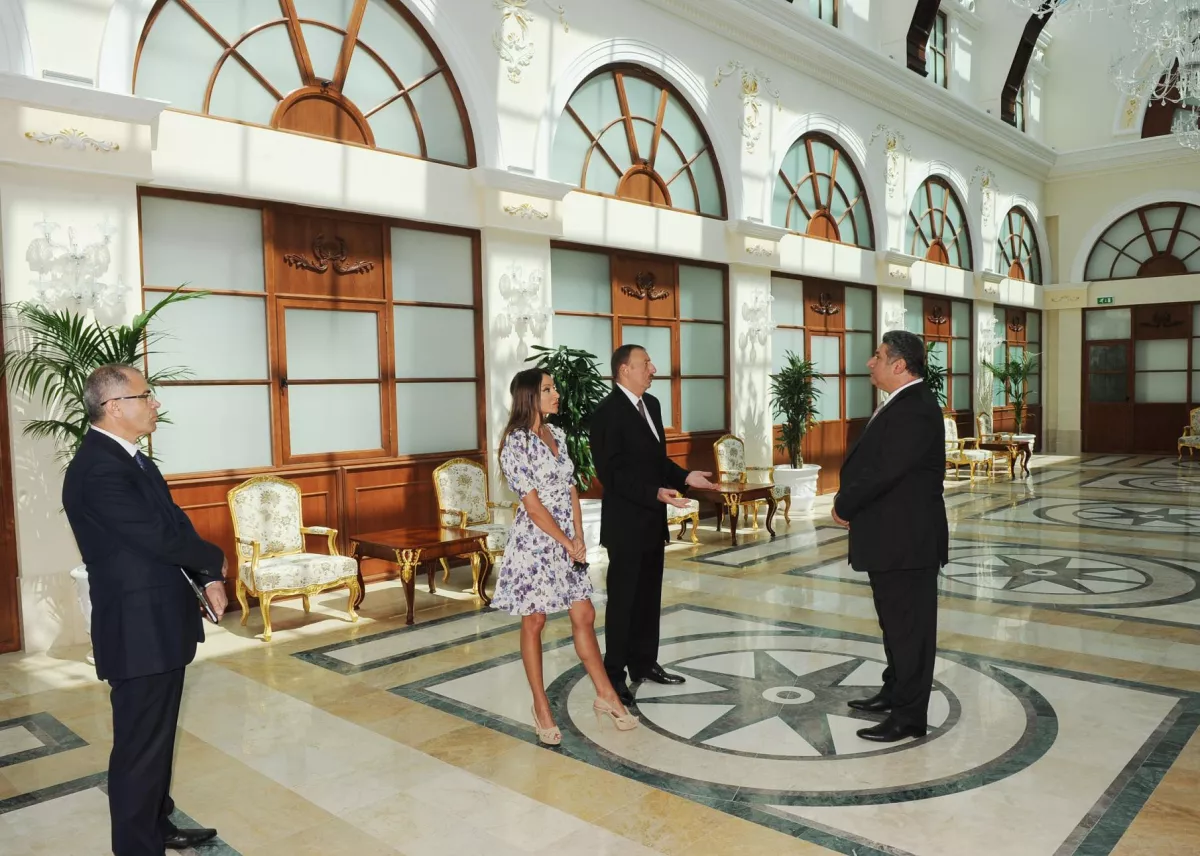
The Palace of Happiness of Murtuza and Liza has remained a Palace of Happiness — for young Baku couples and a monument to the great love of Liza and Murtuza Mukhtarov. Today, Murtuza Mukhtarov’s palace remains one of the brightest architectural ornaments of Baku, embodying the elegance and luxury of the early 20th century. It is not just a building, but a symbol of love, taste, and craftsmanship that continues to amaze both the residents and visitors of the city.
Income house on Nizami Street
Another one of his projects was the income house at the corner of Laundry Street (now Gogol Street) and Trading Street (now Nizami Street). It was built in 1893 according to the design of architect I. V. Edel. In the mid-1900s, the building was acquired by Murtuza Mukhtarov, who, in 1910, ordered the addition of two floors according to the design of architect Płoszko. As a result, the building acquired a completely new look.
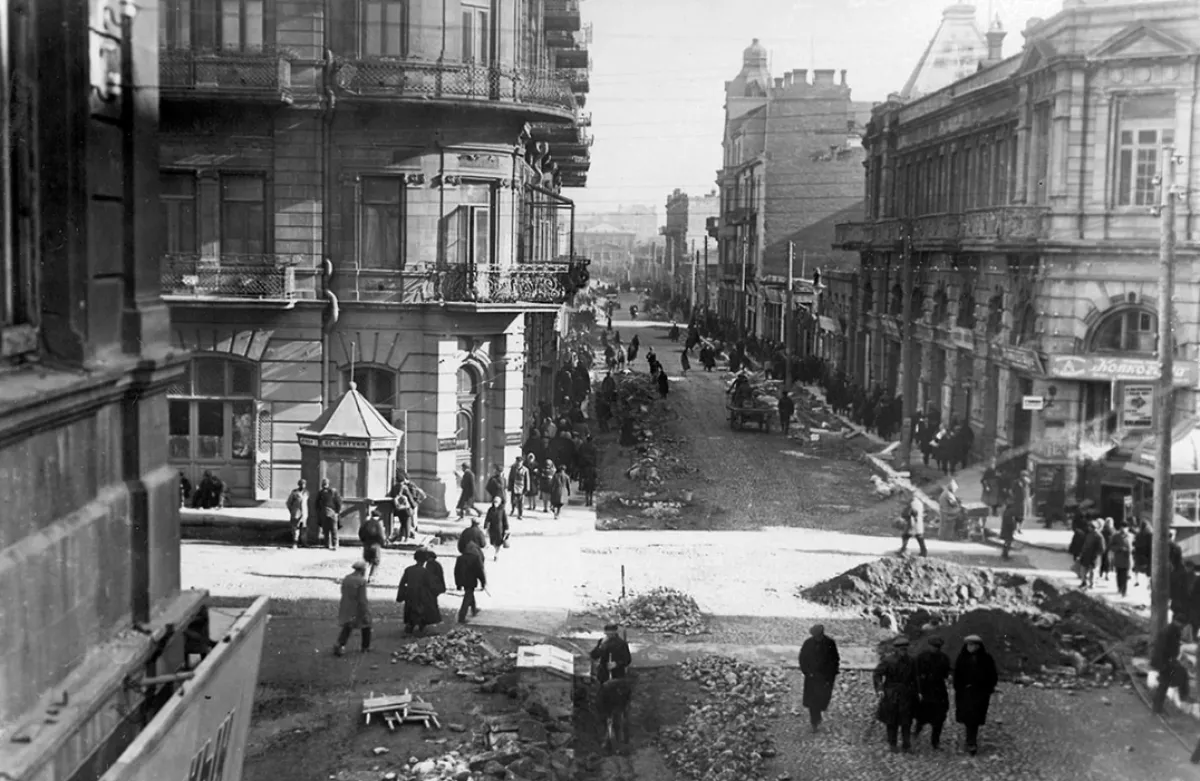
The addition of the two floors introduced unique architectural elements, including the semicircular design of the corner part of the building, highlighted by a dome-like completion. This design gives the building expressiveness and strengthens the historical center of Baku, becoming an important element of the urban landscape. The façade is stylistically executed with classical elements of the order system, lending the building a majestic and strict appearance. Prominent features of the façade include the projecting risalits and the active horizontal division, which harmoniously combine with the floral ornaments and motifs located above the windows.
The window openings and stone balconies with metal railings provide the building with a soft plasticity and accentuate its refined architecture. In the past, the building housed comfortable apartments with meticulously finished interiors.
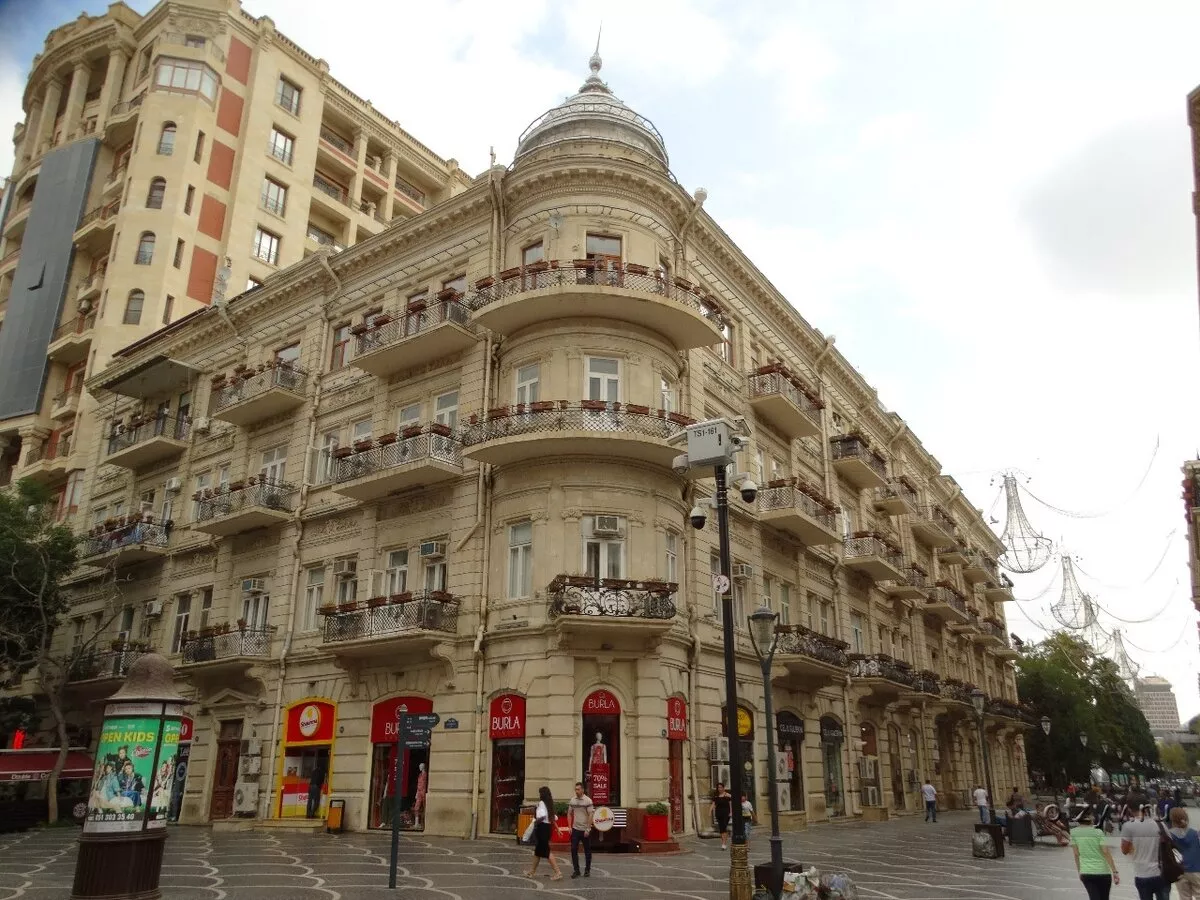
This income house is an important architectural landmark of the city, preserving historical value. Its scale and exquisite details are impressive, serving as a reminder of the legacy of an outstanding individual. Murtuza Mukhtarov’s house, as an ornament of Nizami Street, recreates the atmosphere of the early 20th century when Baku became one of the world’s largest oil centers.
To be continued…
Vahid Shukurov, exclusively for Caliber.Az




